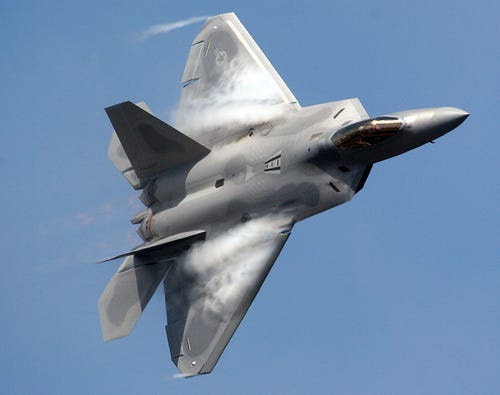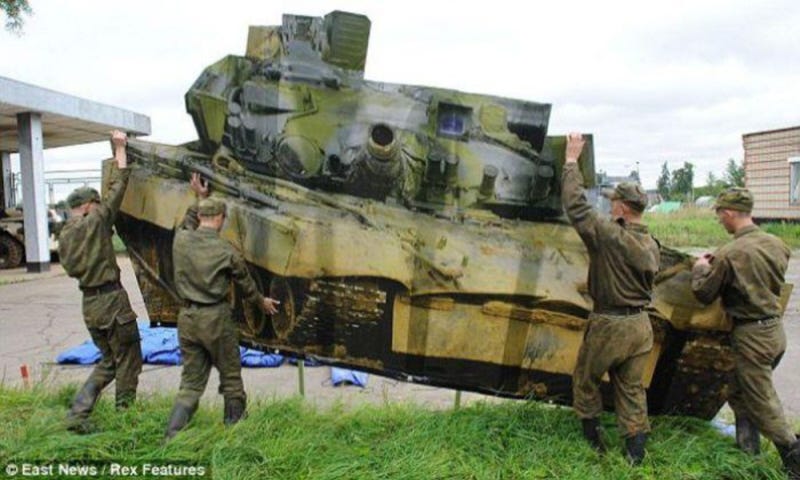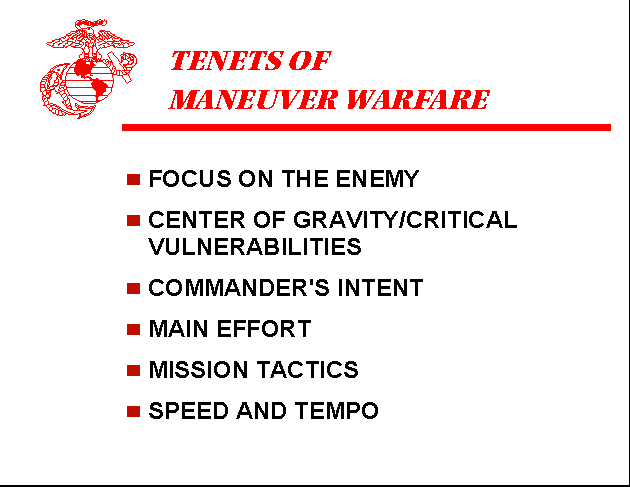How “Synchronization Warfare” has removed the human from modern warfare
This article is provided by Don Vandergriff from excerpts of his book Path to Victory: America’s Army and the Revolution in Human Affairs. The author would like to thank Major PJ Tremblay, USMC for editing and suggestions and Chuck Spinney for his assistance. The views expressed in this article belong to the author alone and do not represent the Department of Defense.
U.S. and NATO doctrine manuals are too thick and redundant. I recommended to the Army CSA General Casey in 2008 in an office call that they should be pocket book, handbook size around 30 double spaced pages, in big font, and mainly using short historical vignettes—good and bad—for examples. They should consist of principles. Under Mission Command let our people figure it out how to accomplish the principles based on a never ending evolution of Lessons Learned and experience; intermix them with good and bad historical lessons. Unfortunately our manuals reflect our doctrine, which reflect the culture of the U.S. and NATO militaries. They still resemble high-tech manuals, detailing everything with overwhelming redundancy. They reflect top-down control and risk aversion.
Doctrine expressed through manuals in the age of so-called Mission Command continues to emphasize Synchronization Warfare (SW). The top-down decision-making architecture embraced as doctrine in the Army, Air Force, and Navy is an updated version of the French World War II doctrine called “methodical battle.” Today, SW is in the form of a concept that emerging sensor, communications, data processing, and precision-guidance technologies can be glued together with detailed standard operating procedures (SOPs). At the heart of SW is the cybernetic concept of negative feedback control loops that can be used to build a single mechanized OODA loop fitting all levels of an organization. Being a mechanical conception, SW emphasizes hardware over people, as can be seen clearly in the hype surrounding the techno-centric revolution in military affairs so popular with defense intellectuals, politicians, and contractors.
Synchronization warfare aims to centralize decisions and achieve unity of effort by giving the commander a detailed feedback control system.
However, SW is a methodical, analytic, top-down thinking process that assumes that a top-level commander can observe and orient himself to all the details on the entire battlefield. Given his god’s-eye view (made ever more effective by “revolutionary” sensing and computing technologies), he will be in the best position to make decisions on what should be done, a well as how and when. Synchronization warfare aims to centralize decisions and achieve unity of effort by giving the commander a detailed feedback control system. He can precisely regulate and control (or micromanage, to use a pejorative term) all the activities of his subordinate units, much the way a centrally directed, computer-controlled system of thermostats would regulate the temperature of each room in a building from the penthouse.
Retired Army colonel Robert Holcomb working at the Institute of Defense analysis back in early 2000 provides an excellent description of how information technologists are trying (and failing) to cobble together an information system to cope with complex demands of synchronization architecture for a ground force. Holcomb’s analysis illustrates the central conundrum impeding the effectiveness of SW. Its top-down architecture also assumes one can establish a common tempo and rhythm for all the OODA loops in the hierarchy of a military organization. However, different levels in the hierarchy have different natural rhythms. Logically, a common tempo can be achieved only by a close-control system that speeds up higher-level OODA loops and/or slows down lower-level OODA loops.
Speeding up higher-level loops is limited, because the theory of a god’s-eye view proliferates the quantity and variety of information about both friendly and enemy forces that flows into higher headquarters. The explosion of “information” is fueled by the quest for a perfect picture and the natural result buries the headquarters in an avalanche of detailed data managed by very large and top heavy staffs. This phenomenon, known as “information overload,” makes it more time-consuming to sort out contradictions and ambiguities in the effort to synthesize the common picture needed to synchronize all the OODA loops.

F-22 Raptor
Thus, even in scripted exercises, it takes more time and effort to “sort the wheat from the chaff,” notwithstanding great advances in data processing and sensing technologies. It should not be surprising that experience has shown the potential for speeding up decision cycles at the highest levels is limited at best under SW, and consequently the common practice has been to slow down the decision cycles of the lower-level units to achieve a common cycle. This can be seen in the increase to a seventy-two- to ninety-six-hour cycle to complete an Air Tasking Order (ATO) in both the 1991 Gulf War and the 1999 air war over Kosovo, compared to the twenty-four hours it took during the Vietnam War. Another example: during the Gulf War, Central Command (CENTCOM) and the U.S. Army VII Corps rigidly adhered to maneuver control measures during the great “Hail Mary” play or “grand wheel” that “pushed” the Iraqi Republican Guard “out the back door,” leaving it capable of fighting again a few weeks later.
And later in the campaigns in Iraq and Afghanistan, detailed operations orders and huge staffs oversaw the actions of units as small as platoons. In his advance on Baghdad in March-April 2003, Major General Buford C. Blunt, Commanding General of the 3rd Infantry Division (which attempted to operate within the principles of Mission Command) remained 24 hours ahead of the of V Corps and CENTCOM HQs situational awareness and their orders (interview with MG Blunt (ret.), DEC 2005). So-called COIN operations in Iraq and today in Afghanistan are overseen by massive layers of people and technology all trying to fight for the smallest piece of information, which in turn makes the control of every action of individuals a by-product. Thus, a resemblance of Mission Command is by exception or default (failed communications or subordinates simply ignoring higher if they can (but they can be seen!!)). The result of this type of Command-Push is that there is a never ending demand for information to feed the machine at the top, which in turn forces their focus inward versus outward on the enemy. M1 Abrams tanks moving in formation during the Gulf War.
M1 Abrams tanks moving in formation during the Gulf War.
 M1 Abrams tanks moving in formation during the Gulf War.
M1 Abrams tanks moving in formation during the Gulf War.
On the other hand, the requirement for quickness and agility on the battlefield does not go away for smaller units. Agility is the difference between life and death for the smaller units doing the real fighting at the tip of the spear. A doctrinal architecture that forces these units to operate at a reduced tempo increases their sluggishness, makes them more predictable, and decreases their ability to shape or adapt effectively to quick-changing threat conditions. This occurred shortly after 2d Squadron, 2d Armored Cavalry Regiment, defeated the Iraqi rear guard at the Battle of 73 Easting during the ground phase of Operation Desert Storm. Instead of rapidly following up the cavalry’s success, VII Corps brought up battalions of corps artillery against the supposed main belt of the Iraqi defense, when in actuality the Iraqis were withdrawing under the cover of the destroyed rear guard.
There is another equally dangerous consequence of SW. The natural tendency toward information overload forces commanders to rely on mechanistic filtering procedures to synthesize the flood of observations into a timely orientation to the unfolding situation. This has increased reliance on a filtering theory known as “templating,” which refers collectively to the array of rigid internal procedures and priorities glued together by methodical modes of sifting sensor data through predefined correlation matrixes.
In SW, templating creates a dangerous vulnerability in the orientation of the centrally controlled OODA loop. At its heart is the assumption that the higher-level commander knows in advance the entire universe of possible signatures, or types and patterns of in-formation, the enemy will exhibit on the battlefield? If his adversary presents him with an ambiguous signature that does not “fit” any of these preconceived patterns, the template cannot reliably-filter the observations and the orientation function of the OODA loop will slow down and possibly collapse in confusion. If a clever-adversary feeds the templaters a deceptive signature—such as the Serbs reported use of microwave ovens to simulate radar emissions and decoys to simulate vehicles—the orientation process could lead an unsuspecting commander into a trap. In sum, this process fits an enemy action into one of the preconceived correlation patterns expected by those who template in order to synchronize friendly actions.
A breakdown in orientation decouples observations from decisions and actions and causes the actions to become disconnected from the threat.
In either case, the crucial point is that a breakdown in orientation decouples observations from decisions and actions and causes the actions to become disconnected from the threat. As actions become more irrelevant, observations of their results are likely to feedback into the commander’s OODA loop in a way that will amplify his confusion into chaos and possibly even panic as the entire command system becomes progressively disconnected from reality. William Shirer’s Collapse of the Third Republic contains an excellent description of the incestuous amplification of chaos in the French army during its collapse in May 1940.
A template-driven orientation process is theoretically flawed because it makes the user predictable and therefore vulnerable to the penetration of his own decision cycle. This problem is not one of abstract theory, our quasi-religious belief that technology will overcome SW’s central conundrum notwithstanding. Its practitioners litter the history of warfare with examples of a failure to adapt. These include the execution of the German Schlieffen Plan during the invasion of France in 1914; the British Somme offensive in 1916; the French doctrine of “methodical battle,” based on the Maginot Line and rigid mechanical movement of maneuver forces into Belgium in 1940; the over-control of U.S. ground operations in Vietnam (e.g., the stack of command helicopters circling over the battlefield decried by Gen. Bruce Palmer in The 25 Year War); the failure to envelop the Iraqi Republican Guard in the Persian Gulf War; North Atlantic Treaty Organization (NATO) air forces’ inability to keep up with or retard Serbian ground actions in Kosovo from March through June 1999; and the Rules of Engagement demanding approval for supporting fires by several layers of command in Iraq and Afghanistan 2001-2014. Looks real from the air…
Looks real from the air…
 Looks real from the air…
Looks real from the air…
The synchronization architecture of the NATO command structure seduced commanders into seeing what they wanted to see as opposed to what was actually happening to Serbian ground forces in Kosovo. This is evident by examining a 19 May 1999 NATO slide describing the ongoing effects that NATO leaders thought their bombing campaign were having on Serb forces. Briefing officers claimed that NATO had destroyed 31 percent of Serbia’s heavy forces in Kosovo (312 tanks, artillery pieces, and armored vehicles among 556 pieces of equipment). Thanks to an expose by Newsweek in May 2000, the public now knows that Serbia lost only fourteen tanks, twelve self-propelled guns, and six to ten towed artillery pieces. Moreover, after the ceasefire in June 1999, Cable News Network (CNN) viewers watched incredulously as a virtually un-touched, well-disciplined, and defiant Serbian army drove out of Kosovo. According to news reports, more troops left Kosovo intact than were assumed to be in it before the bombing started.
Dialectic of the Current Culture: Maneuver Warfare
An alternative to Synchronization Warfare is somewhat misleadingly labeled Maneuver Marfare (MW). The confusion arises from the fact that forces maneuver in all forms of war, including SW. Maneuver Warfare, however, is an organic, intuitive, bottom-up decision-making architecture based on the theory that lower-echelon commanders on the scene can be trusted to better appreciate local conditions and are competent enough to be empowered to make independent decisions consistent with the commander’s intentions. In contrast to SW, MW does not focus on methodical procedures to build a uniform OODA loop. It is better thought of as a way of thinking that enables commanders at all levels to naturally harmonize their efforts and maintain their focus on the enemy while operating at their own OODA loop’s natural tempo.

Maneuver warfare achieves this by weaving certain central ideas to a decision-making pattern that stresses leadership, decentralization, internal simplicity, speed, and harmony of effort. The glue that holds this process together is trust founded on the professionalism and shared experiences found in cohesive units. When commanders and units achieve the ability to practice MW, they become extremely agile as “past actions are absorbed as experience so that future, identical actions do not lead to the same results.” Maneuver warfare has some fundamental concepts:
• Commander’s Intent. This is a commander’s long-term vision of what he wants to do to the enemy. It is incumbent on each subordinate commander to understand the intent of the next two commanders above him in his organization’s hierarchy. Each commander must state his intent clearly and simply.
• Mission Orders. These can be thought of as a contract based on mutual trust. The subordinate agrees to make his near-term actions serve his superior’s intent, and the superior agrees to give the subordinate the latitude to determine how that intent is to be realized. Mission orders simplify internal arrangements by reducing details to essentials.
• Main Effort (Schwerpunkt) and other, or Supporting, Efforts (Nebenpunkt). Schwerpunkt and nebenpunkt are the yin and yang of a unit’s efforts. The main effort, or schwerpunkt, is a unifying idea used to shape commitment and harmonize subordinates’ initiative within their superiors’ intent. Nebenpunkt is viewed by officers outside the schwerpunkt as how they will assist their comrades on the left and right flanks to succeed, especially if they are the schwerpunkt.™ Schwerpunkt permits the simplification of information and decentralization of tactical command within centralized strategic guidance at all levels from theater to platoon. For example, a company commander might assign the main effort to one platoon, and the other platoon leaders then use their judgment and the commander’s intent to determine how to shape their actions to support the main effort. The commander of each unit can change his schwerpunkt at any time (this maintains operational fluidity) if such a change will help him more easily achieve his commander’s intent. Once such a change is made, subordinate units align their supporting efforts accordingly. The ability to shift main and supporting efforts quickly within the constraint shaped by the commander’s intent maintains fluidity of action and harmony of effort in changing circumstances.
• Surfaces and Gaps (Strong and Weak Points) and Multiple Thrusts. This is the basis for focusing efforts—a way of looking at the enemy as an organic, directed entity rather than as a mechanical inventory of targets. The idea of surfaces and gaps goes well beyond physical attributes. For example, a surface to be avoided could be adverse world opinion resulting from some action, whereas an adversary’s internal political dissent might be a gap. Forward-screening forces infiltrate the enemy to probe his intentions, find surfaces and gaps, or create gaps.
Follow-on forces reinforce successful penetrations and larger units flow in and roll out in an expanding flow. They isolate surfaces while being sucked forward through gaps by the tactical decisions made by commanders in the lead elements and the reinforcing decisions of higher-level commanders (these tactics and decision-making patterns are sometimes known as “recon pull”). The basic tactical idea is that lower-level commanders use their commander’s intent to help them decide where and how to infiltrate and penetrate the enemy with multiple thrusts. The multiple thrusts make the attack ambiguous on the receiving end, and successful penetrations uncover opportunities that higher-level commanders can then choose to reinforce (depending on their appreciation of the unfolding situation) by sending in follow-on forces with the idea of pouring through gaps and around surfaces. Done properly, this action creates a quickly coalescing flow, much like an increasingly powerful torrent of water that gathers form, directs, and energy as it flows down a hill.
• Large Reserve. This is a proactive concept to cope with uncertainty and exploit opportunities. Commanders at all levels always maintain a reserve force in defensive or offensive combat. When committed, it either supports or becomes the main effort.
• Combined Arms. Commanders employ tactical repertoires that call for hitting the enemy with two or more combat arms (armor, air support, infantry, fire support, engineers, electronic warfare) simultaneously such that by focusing his defenses against one arm the enemy will be more vulnerable to the other(s).
1 comment:
Nice post. I used to be checking constantly this weblog and I'm
inspired! Very useful info specifically the closing phase :) I care for such information much.
I was looking for this certain information for a
very long time. Thank you and best of luck.
Also visit my site; pregnancy reflexology Alberta
Post a Comment